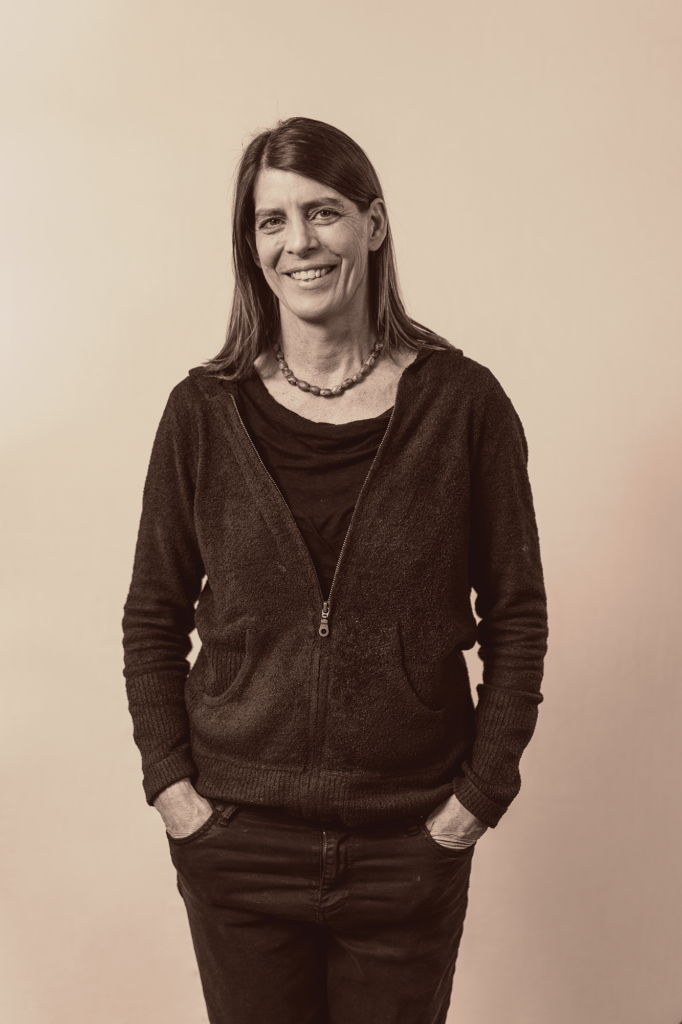
When Kayla Kidd was in her first semester of college, she was ready to quit. She felt overwhelmed, isolated, and unsure how she was going to afford tuition. Kidd, who is Northern Ute and Uncompahgre from the Ute Indian Tribe, was just a three-hour drive from her family and home on the Uintah and Ouray Reservation—but to her, it was a world away.
“I was alone in my little box,” she says. “I was the only brown kid in the class. I didn’t understand the way some of my professors taught. And I just felt like everybody looked down on me—like they didn’t see me succeeding.” An advisor warned her she was in danger of failing and having to leave the U. The conversation shattered Kidd’s already fragile state. “I felt like if she didn’t want me here, then nobody wanted me here.”
Research shows other American Indian college students experience similar feelings. In a recent study from Arizona State University, students reported feeling they didn’t belong, didn’t know how to navigate college, and found it hard to be disconnected from their families, culture, and traditions. Finances are a major worry as well. In a 2022 Indigenous students college affordability report, nearly a quarter of study participants didn’t know how they would pay for college the next year, and 72 percent reported they’d run out of money at least once in the last six months. Some even experienced food insecurity and homelessness.
These concerns can, of course, have a damaging effect on completion rates. In fact, Indigenous students are more likely to leave college during their first year than any other racial or ethnic group. Supporting these students takes a comprehensive approach, and University of Utah leaders are working to expand programs and resources that help students like Kidd succeed, says Martha Macomber, the U’s education liaison to the Ute Indian Tribe.
It was Macomber who Kidd reached out to at her lowest point. Macomber helped her find financial aid, tutoring, social support, and a renewed sense of determination.


“I wanted to prove that I wasn’t going to fail any of my classes,” Kidd says. “And I didn’t. I pushed through and finished.” Now a sophomore, she’s pursuing a degree in criminology and thinks law school may be in her future. Her end goal is to work on behalf of crime victims in her community.
Macomber believes it’s the U community that truly benefits when more Indigenous students are included. “The university is greatly enriched by the wisdom, life experiences, and talents these students bring,” she says.
THE POSSIBILITY OF HIGHER EDUCATION
On a sunny day in June, a group of middle and high schoolers from the Uintah and Ouray Reservation are standing in the foothills above campus. The cheatgrass is still green this time of year, and it ripples like waves as the students listen to the U’s Indigenous land statement, which the U launched in 2020 to recognize that the university sits on ancestral tribal homelands. After the students finish their hike along the Bonneville Shoreline Trail, they’ll return to their dorm rooms in Kahlert Village to work on video and art projects. The next day they’ll play with Marriott Library’s VR equipment, followed by bowling at the Union.
It’s all part of the Ute Storytelling Camp, led by Macomber in collaboration with the J. Willard Marriott Library, College of Fine Arts, American Indian Resource Center, and other U partners. The camp is a chance for kids to connect with their personal and family histories while experiencing what the U has to offer.
The university’s relationship with the Ute Indian Tribe began with a naming agreement and blossomed into a partnership guided by a Memorandum of Understanding (MOU). Through the more recent versions of the MOU, the tribe grants the U permission to use the “Ute” name for its athletics teams, and the U provides youth programs, scholarships, post-secondary-school planning, and support for Ute Indian Tribe students to enhance their social, economic, and academic success while attending the U.
Events like the storytelling camp introduce students to the possibility of higher education, says Ronee Wopsock, Ute Indian Tribe member and director of its education department. “Students have to decide whether they want to be educated to begin with,” she notes. “They don’t always see the importance in education. Once they do, they need to know the University of Utah can be an option for them.”
A WIDENING GAP
Kyri Ungatavinekent-Duncan BS’20 (Northern Ute, Uncompahgre Band) says he knows it’s cliché, but it’s true: “College opens doors.” A recent graduate, he now works at the U’s Center for Equity and Student Belonging as leader of Native/Indigenous student engagement and advisor to the Inter-Tribal Student Association (ITSA). “College lets you tap into different things and see more potential for what you could be,” he says.

But there’s a major gap in education attainment between American Indians and the population as a whole. The National Center for Education Statistics (NCES) reports American Indians and Alaska Natives have the lowest high school graduation rates of any racial or ethnic group. The U.S. Census Bureau shows only 15 percent of American Indians and Alaska Natives age 25 or older have a bachelor’s degree, compared with 31 percent of the overall population.
And the gap is widening. The number of bachelor’s degrees increased over the past decade for all racial and ethnic groups except American Indians and Alaska Natives, according to NCES. Start pulling at the threads of why this gap exists, and you’ll soon have a tangle of systemic barriers. Wopsock says college readiness is one such obstacle, with underfunded schools lacking the resources to prepare kids for higher education effectively. Geographical distance from traditional homelands is another factor, notes Samantha Eldridge BS’08 MPA’10 (Diné), director of the U’s American Indian Resource Center.
With many students coming from low socioeconomic backgrounds, Eldridge says finances are the number one barrier. It’s a vicious cycle—education can help build generational wealth, but that lack of wealth makes college inaccessible for many American Indian families. Even if students receive aid, the funds typically aren’t enough to meet their significant financial needs.
So in 2022, the U introduced the Native Student Scholarship for students enrolled in one of Utah’s eight federally recognized tribes—the Confederated Tribes of Goshute, Navajo, Northwestern Band of Shoshone, Paiute Indian Tribe of Utah, San Juan Southern Paiute, Skull Valley Band of Goshute, White Mesa Band of the Ute Mountain Ute, and Ute Indian Tribe (also known as the Northern Ute Tribe)—or in the three border tribes that receive in-state tuition: Hopi, Zuni, and Shoshone-Bannock. The scholarship will pay for undergraduate student tuition and mandatory fees not covered by scholarships and grants from all other sources.
“My vision for the U is to impact the lives of all 3.4 million Utahns,” said U President Taylor Randall HBA’90 in a news release announcing the move. “This includes members of Utah’s tribal nations. This is a vital part of committing the U to deliver a transformative educational experience to communities across Utah.”

However, not every student who identifies as American Indian is enrolled in a tribe—eligibility requirements vary from tribe to tribe and can be complicated. But Eldridge says U leaders are committed to finding the most equitable paths to the scholarship for as many Indigenous students as possible. The significance of this announcement goes beyond financial support, she notes. “It also sends the message to our Native students that we want you to come to the U.”
“I BELONG HERE”
There’s a line from the movie Smoke Signals that Kiyanna Porter (Diné) says encapsulates the feeling of leaving the reservation: “You guys got your passports? You’re leaving the rez and going to a whole different country.”
Porter, a math major in the Honors College at the U, grew up in mostly urban and suburban areas in Utah, California, and Idaho. But she also lived on the Navajo Reservation and understands the perspective of going from a tribal community to a predominantly white university far from home.
“For some people, it’s the biggest leap they could ever make,” she says. “It’s hard when you only know one world, and all of a sudden you’re thrown into a different world that feels like it wasn’t made for you.”
Ungatavinekent-Duncan says he immediately noticed a lack of representation when he first arrived at the U. Just 128 of the U’s 34,000 students identify as American Indian, and that means resources for Indigenous students are hard to come by. Part of his job at the U is to help build more programs centered around their needs.
Microaggressions and racism add a painful layer to the feeling of not belonging. Porter points to an incident at the beginning of the 2022-23 school year: an American Indian student practicing a powwow dance in the Student Rec Center was unknowingly recorded by another student, who posted the video online with the hashtag #Utealcoholic. To actively address incidents like this, the U created a racism response team in 2019 as part of a concerted effort to fight racism on campus. Part of the response to this particular incident, for example, was to secure private spaces on campus where students can practice their spiritual traditions.


Porter says that when the U community pays attention to the discrimination and injustices Indigenous people face, students feel seen and heard. As the U’s 2022-23 American Indian Woman Scholar, she raises visibility of Indigenous issues. She also co-leads ITSA, which organizes awareness events and social gatherings to provide students with a sense of belonging.
Researchers say that sense of belonging is crucial to Native students’ likelihood of persisting. The American Indian Resource Center (AIRC) embodies that goal, with a motto of “I belong here.” The AIRC connects students with programs and resources that support their academic success and well-being and provides a welcoming space students describe as a home away from home.
Eldridge was an undergrad the year the AIRC began. Still adjusting culturally after moving from the Navajo Reservation to Salt Lake City as a teenager, she “felt the center was the only place I could go and connect with other students who looked like me,” she says. “I didn’t have to explain anything about my culture or the way I did things.”
Now she and her AIRC colleagues are planning to create more spaces on campus where American Indian students feel safe and welcome, and more opportunities for them to engage around their identity, culture, and traditions. The AIRC intends to launch new initiatives, including a Native Excellence Scholars program for every student receiving the Native Student Scholarship. The program will provide holistic support through mentoring, academic skill development, culturally relevant programming, and preparation for life after college.
 The U’s Native American Research Internship (NARI) is an example of an academic program that provides holistic support. Created in 2010 to address the need for more American Indian scientists and health care providers, the 10-week paid internship is open to undergrads from the U and other schools. Students receive hands-on research experience and meet with mentors at the U and in the larger American Indian community, who help them integrate their cultural identity in the research environment. Program manager Wallita Ranger (Diné) says the mentor network is vital to student success. Some 25 students take part each year, and 80 have gone on to graduate or medical school.
The U’s Native American Research Internship (NARI) is an example of an academic program that provides holistic support. Created in 2010 to address the need for more American Indian scientists and health care providers, the 10-week paid internship is open to undergrads from the U and other schools. Students receive hands-on research experience and meet with mentors at the U and in the larger American Indian community, who help them integrate their cultural identity in the research environment. Program manager Wallita Ranger (Diné) says the mentor network is vital to student success. Some 25 students take part each year, and 80 have gone on to graduate or medical school.
U leaders and tribal partners emphasize there is still much work ahead. Ronee Wopsock says we’re just at the beginning of the relationship between the university and the Ute Indian Tribe. “I’m excited to see it grow,” she says. “As we keep working together, we’ll continue to see success for the university and our tribal youth.” She believes the U’s work with the tribe can serve as an outreach model for all eight of Utah’s Native nations.
In fact, Macomber will soon take on similar work with those tribes as she does with the Ute Indian Tribe, like post-secondary-school planning. She notes that her role here isn’t necessarily U recruiter. Rather, these efforts are part of the U’s vision to serve Utah’s communities. Wopsock says the university must work in tandem with tribes, listen to tribal leaders, and provide guidance as students find the path that’s right for them. That may mean a university closer to home or community college or a trade school.
But for many students, their dream is to attend the U. “It’s what they aspire to,” Macomber says. “And once a child has that aspiration, and they live in Utah, it’s our mission. It’s our values to say we will do what we can to make that aspiration come true.”
Lisa Anderson is associate editor of Utah Magazine.



Great article outlining the challenges and support that is rising to help Native American students!
Really happy to see the focus on Native access and support to higher education at the U. One thing I’d suggest is to remove the term ‘American Indian’ and use Native instead.
I’m heartbroken by the statistics but very pleased that the U is addressing them. I’m grateful you are helping the native community.